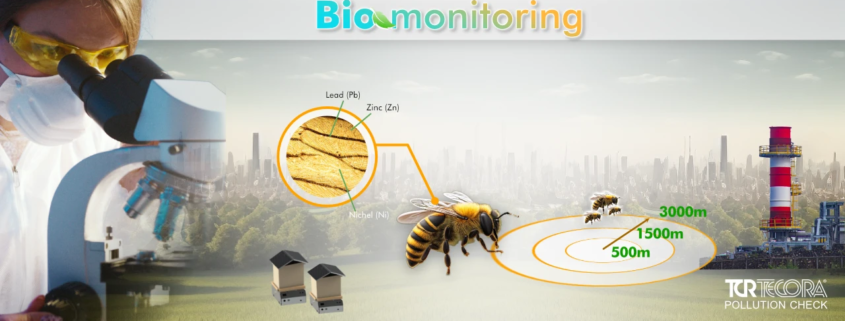How to detect pollutants with bees: a forward-looking approach
How to detect pollutants with bees: a forward-looking approach
Environmental contaminants still represent a serious problem for ecosystems in general and for human health in particular. The interaction between these substances, especially when having very different sources, cause little-known effects on the environment and on health and, alongside their quantification in environmental matrices (water, air, soil), there is an increasing tendency to use more experimental methods to analyze them.
The use of an ecotoxicological approach and model organisms to respond to these needs is a valid and recognized tool, among others, also by the Italian Higher Institute of Health in its Guidelines for the assessment of the health impact of 2019.
Among these, the bees (Apis Mellifera) are one of the model organisms most used today as an ecological sentinel and bioindicator of environmental pollution in applications that aim to assess risks to human health.

Ecosystem Biomonitoring
The morphological and behavioral characteristics of this animal, their ubiquity, their short life cycle, the high reproduction rate and the ease of breeding make them an excellent biological detector.
Furthermore, unlike other bioindicators, their life habits lead them to be representative of the pollution related to a surface area up to a radius of 3 km.

Extension of Biomonitoring up to 3000 meters
The contamination of bees can occur through multiple exposure to atmospheric particulate matter, by contact during the pollination phases or by ingestion, thus providing information on all environmental compartments (soil, vegetation, air and water).
The importance of this approach and of bees in particular is recognized at an international scientific level and supported by numerous publications and projects by cutting-edge research centers and universities in the ecotoxicological sector. Some of these results were presented at this year’s “Science for Planet” congress in Campobasso (Italy), on June 30th, in which they were the subject of the entire third day of work.

Microscopic Analysis with EDX
TCR Tecora is pleased to contribute to this innovative approach, through the design, development and construction of a sampler aimed at ecotoxicological study, created on the basis of the requests of one of these foundations, the Istituto Mario Negri, and through collaboration with Air Factory, an innovative startup company engaged, among others, in the field of environmental biomonitoring.
The product has been developed for this specific use based on a scientific approach but it has also been designed to be as environmentally friendly as possible and allows you to collect bees without causing them any harm.

Biomonitoring Instrumentation by TCR Tecora
Ecotoxicological environmental monitoring represents not only the new frontier in the study of micropollutants for the protection of human health, but also an important step forward in understanding the needs of our allies, the bees. In fact, collecting data indicating how they are damaged by micropollutants will allow us to study more effective strategies for their protection, to reciprocate the favor.
A most advanced version of the project is also being studied, i.e. the creation of high-tech hives to guarantee the bees optimal living conditions and at the same time the execution of pollutant detection directly on site, without the necessity of collecting them and going through the laboratory analysis.

Technological Hives for Indoor Outdoor Biomonitoring Activities TCR Tecora
TCR Tecora firmly believes in the need to put its technological development at the service of innovative solutions aimed at safeguarding both human health and the natural environment, in a profitable and respectful exchange.




